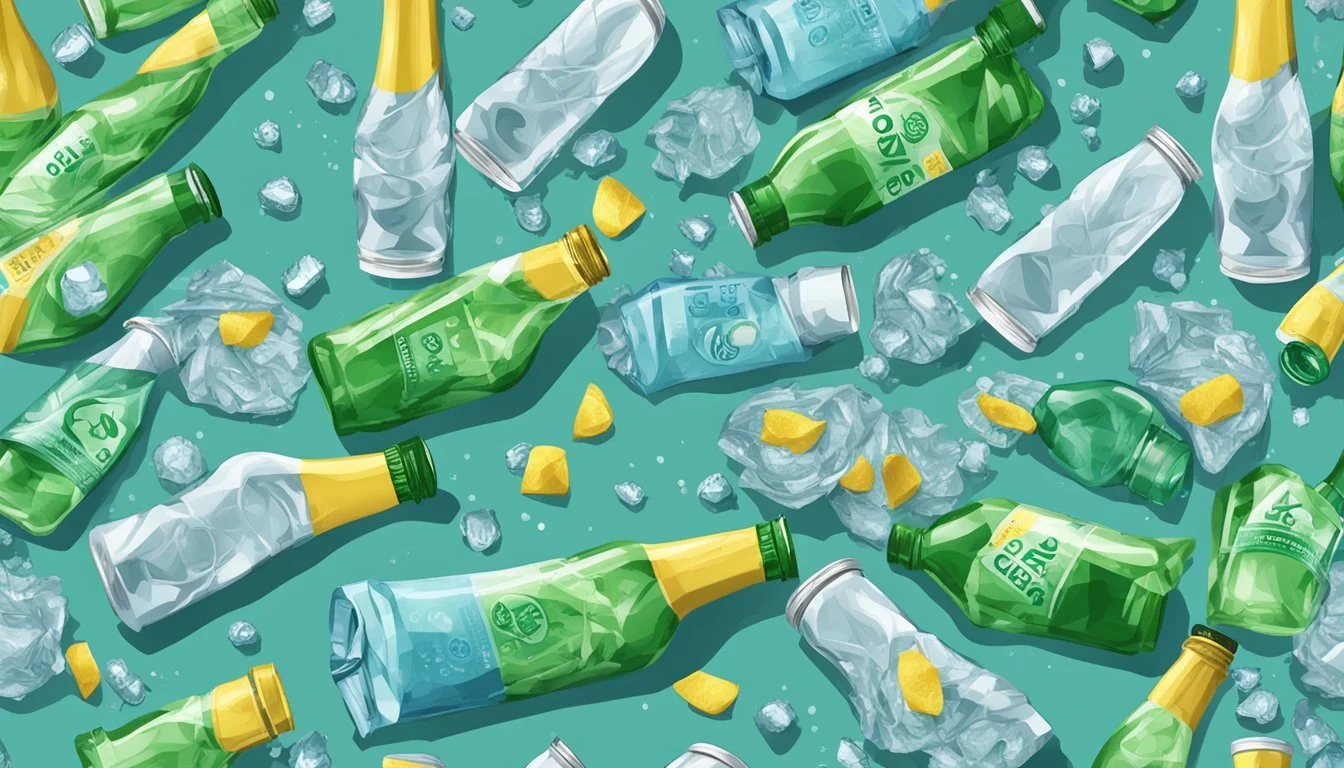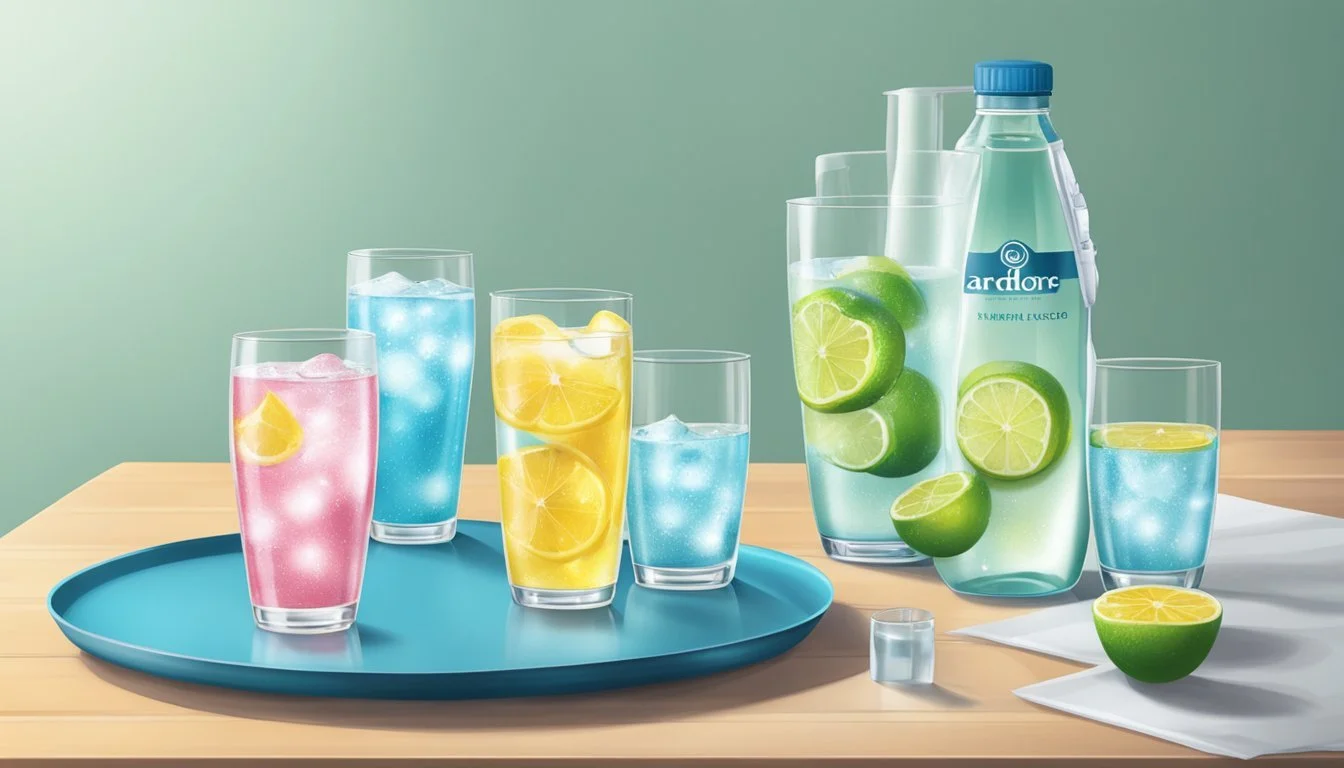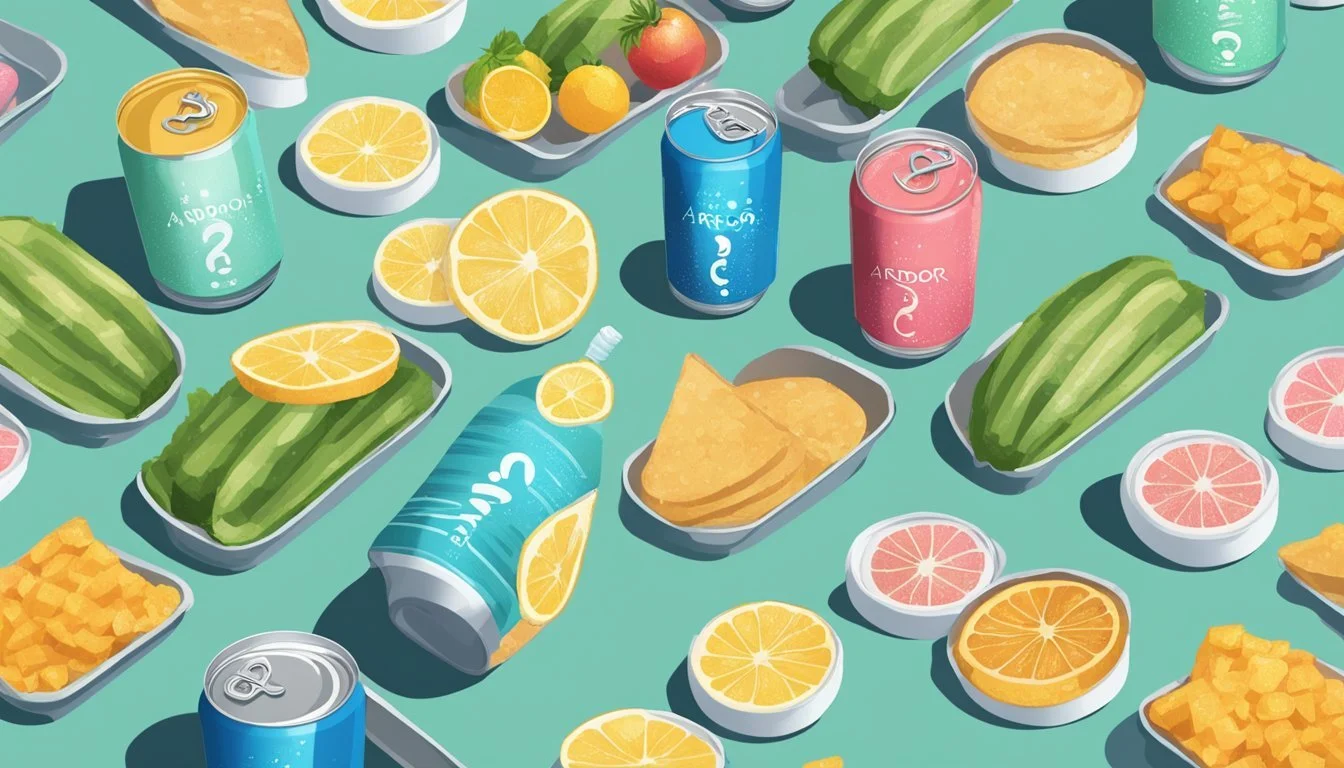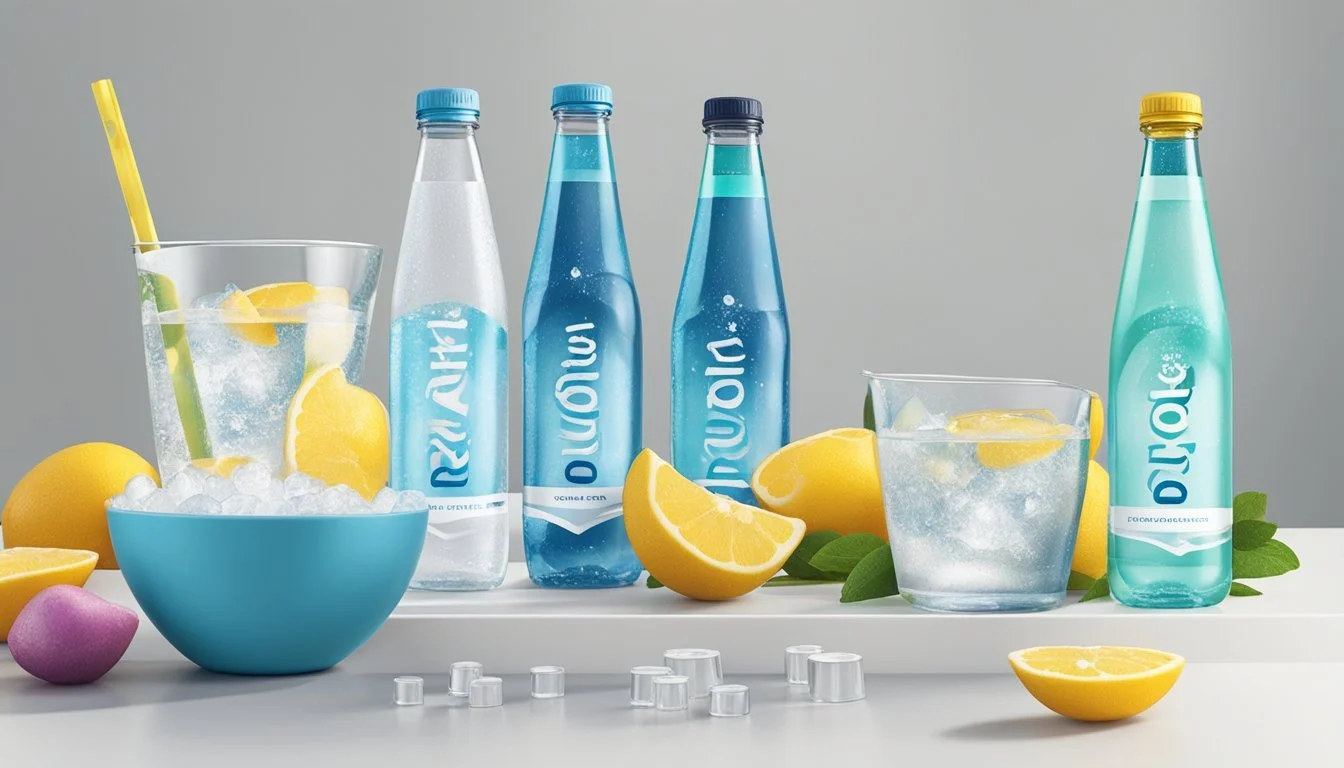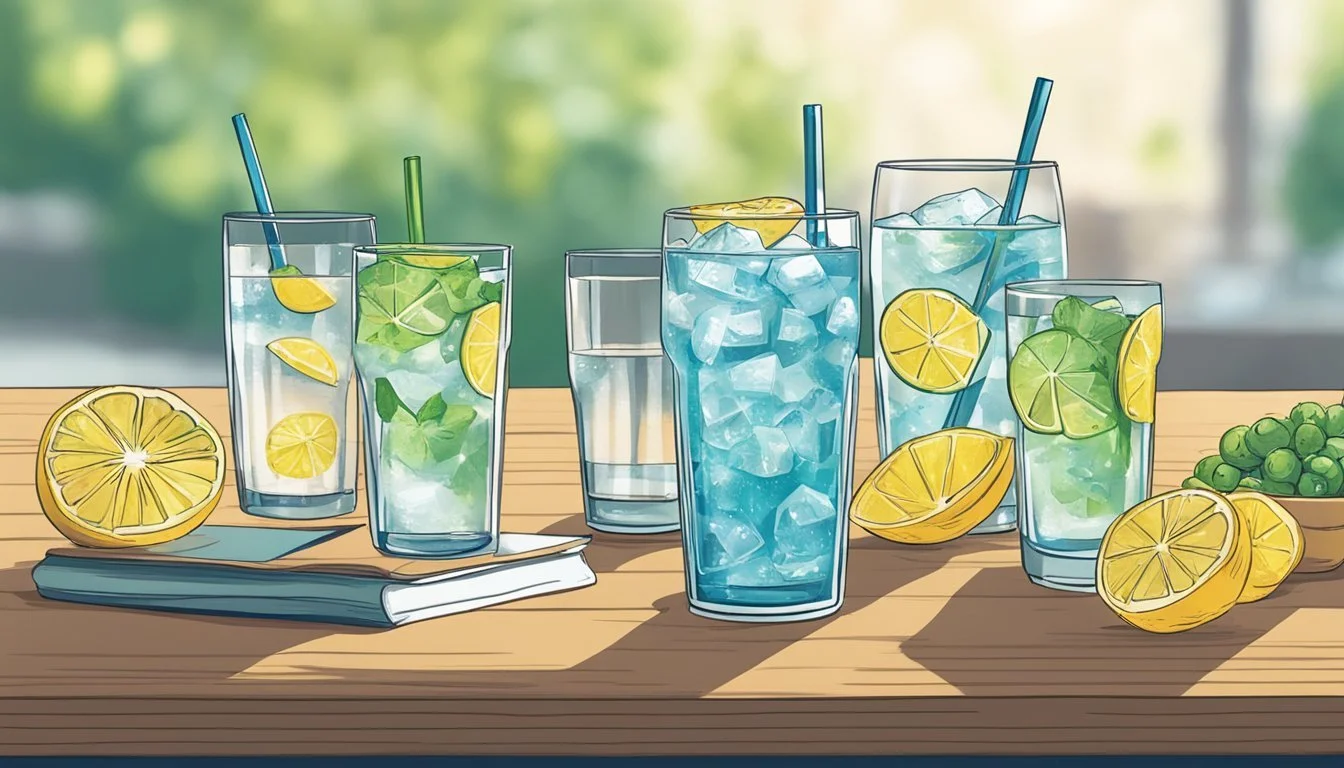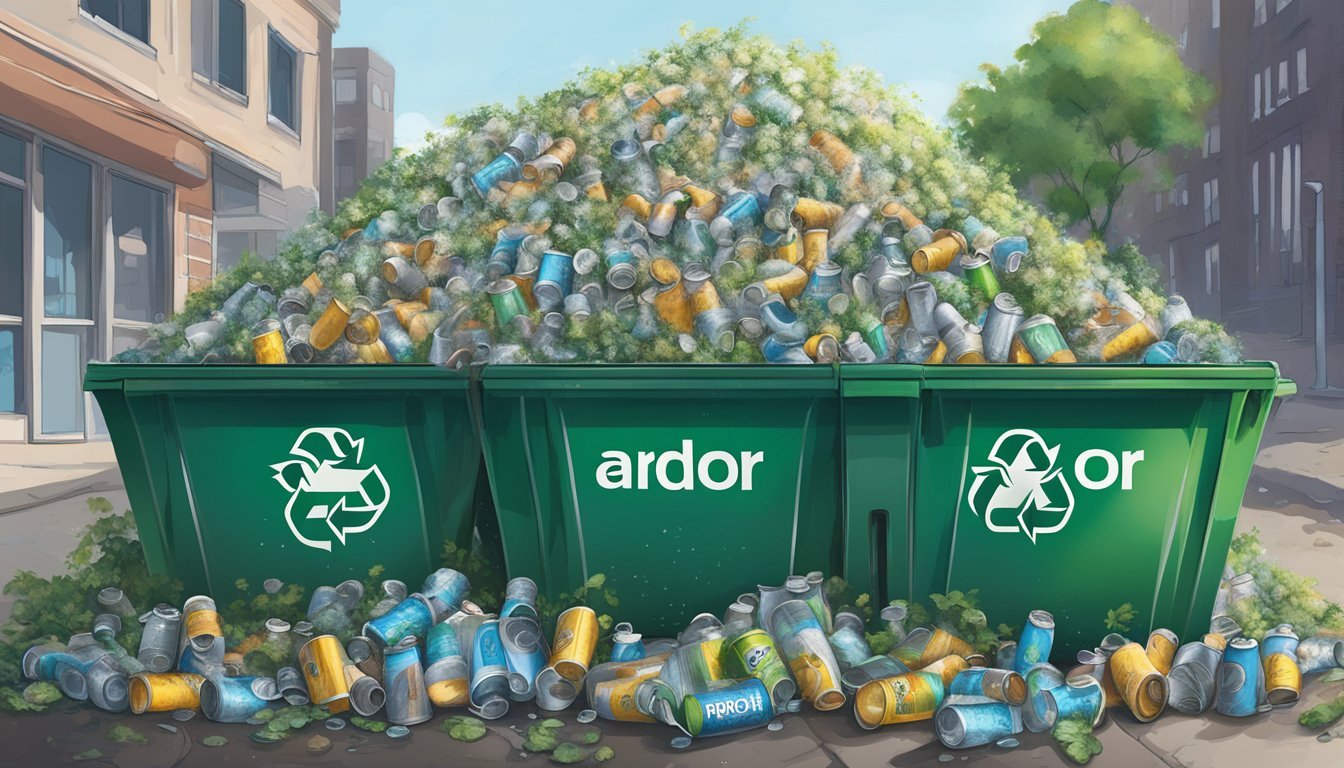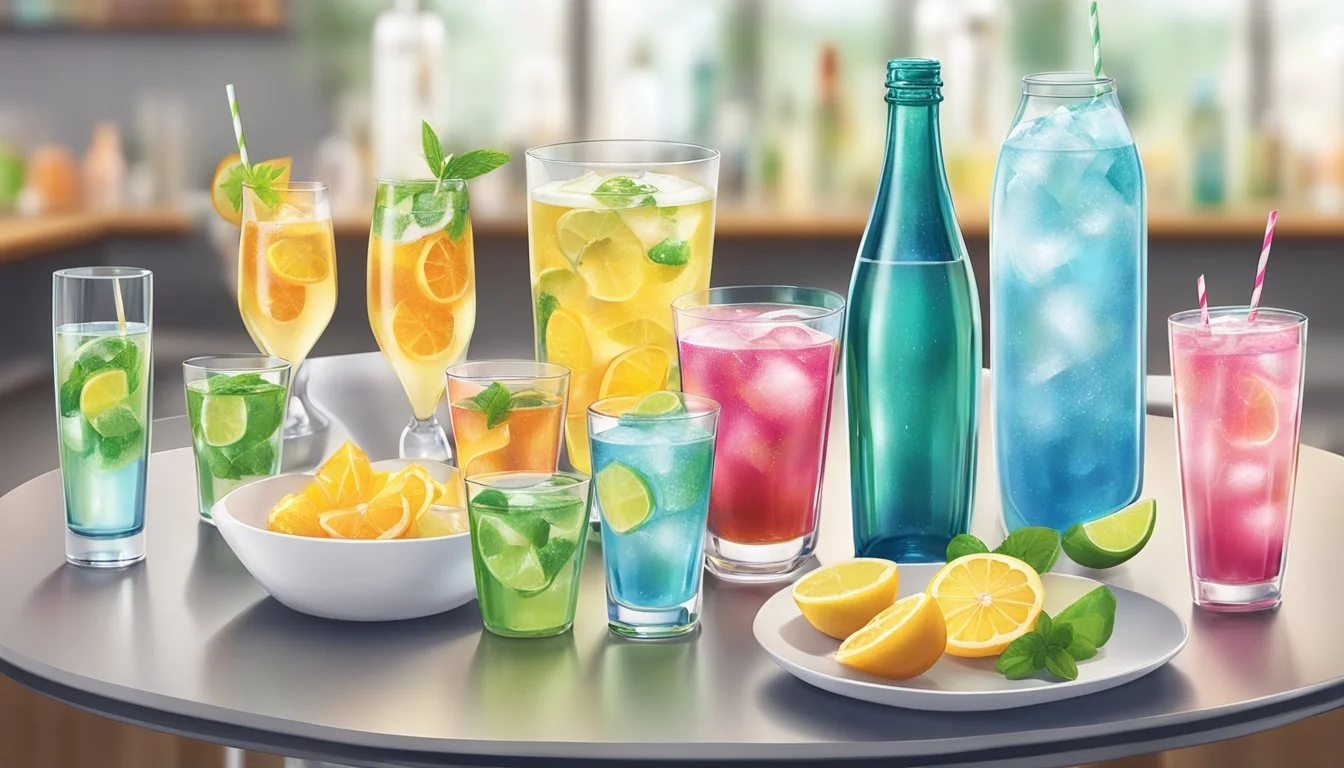How Many Servings of Ardor Sparkling Water is Too Much
Understanding Safe Consumption
Ardor Sparkling Water has garnered much attention for its refreshing taste and zero-calorie appeal. Yet, many wonder how much sparkling water is too much. The recommended daily limit for sparkling water is generally around three to four cans, though individual needs may vary based on overall hydration requirements and personal health.
Sparkling water can be a healthy addition to your daily routine, offering a hydrating alternative to sugary drinks. However, excessive consumption may impact your dental health and lead to bloating. Understanding your body's hydration needs and moderating your intake can help you enjoy the benefits without overdoing it.
For those who enjoy multiple servings a day, monitoring your total fluid intake is crucial. Balancing sparkling water with still water and other hydrating fluids ensures you stay properly hydrated without overwhelming your system.
Understanding Sparkling Water
Sparkling water has become a popular alternative to regular water and soft drinks. It’s essential to know what sparkling water is, how it compares to other beverages, and the role carbonation plays.
Definition and Types of Sparkling Water
Sparkling water is water that contains dissolved carbon dioxide gas, either naturally or added artificially. The carbonation process creates bubbles that give it a fizzy texture.
There are several types of carbonated water:
Seltzer: Plain water with carbon dioxide added.
Club Soda: Like seltzer but contains added minerals such as sodium bicarbonate and potassium sulfate.
Tonic Water: Contains carbon dioxide, sugar, and quinine, giving it a distinct bitter taste.
Mineral Water: Naturally carbonated water from mineral springs, often containing minerals like calcium and magnesium.
Comparing Sparkling Water to Still Water and Soft Drinks
Still water is simply water without carbonation. It is neutral with a pH around 7. Sparkling water, in contrast, can be slightly acidic due to the dissolved gas which forms carbonic acid, lowering the pH.
Soft drinks like sodas are also carbonated but often contain added sugars, artificial flavors, and sometimes caffeine. Sparkling water is typically free from these additives, making it a healthier choice.
For those seeking flavor without the sugar, flavored sparkling water offers a middle ground. It is crucial, though, to check labels for added sweeteners or acids which may affect dental health.
The Role of Carbonation
Carbonation involves infusing water with carbon dioxide gas under pressure. This process can occur naturally in certain mineral waters or be induced artificially in commercial products.
The bubbles created from carbonation can enhance the sensory experience, making beverages feel more refreshing. However, the carbon dioxide can also cause bloating or gas in some people.
Carbonation may influence the taste profile by adding a slight acidic quality. While carbonated water can offer a pleasurable drinking experience, it’s important to monitor intake, particularly with types that contain added sugars or citrus flavors that could impact dental health.
Health and Nutritional Aspects
When evaluating the consumption of Ardor Sparkling Water, it's essential to understand its health impacts. Key points include hydration benefits, nutritional content, dental health effects, and bone health implications.
Hydration and Body Health
Ardor Sparkling Water can contribute significantly to daily fluid intake. It is an effective way to maintain hydration without consuming extra calories. Proper hydration is critical for overall body health, including regulating body temperature, maintaining skin elasticity, and ensuring optimal kidney function.
Given its lack of sugars and artificial sweeteners, Ardor Sparkling Water is a healthy option for those seeking to stay hydrated while avoiding calories often found in sodas and juices.
Nutritional Content
Ardor Sparkling Water offers a unique blend of ingredients. With zero calories, it avoids adding unnecessary energy intake. This makes it a favorable choice for those managing weight. According to Fooducate, it has a 'B minus' nutrition grade, indicating reasonable health benefits and minimal problematic ingredients.
Additionally, varieties like White Peach contain essential minerals like Calcium and Magnesium, which contribute to bone health and metabolic functions. However, it generally lacks macronutrients like proteins or fats.
Impact on Dental Health
Consuming Ardor Sparkling Water may pose minimal risk to dental health. Unlike sugary beverages, it does not contribute significantly to tooth decay. It lacks added sugars and artificial sweeteners, which are often linked to dental erosion.
However, the carbonated nature of the drink could potentially affect the enamel. Some experts suggest that overconsumption of carbonated water might lead to minor dental erosion. Regular dental check-ups and maintaining good oral hygiene can mitigate these risks.
Connection to Bone Health
The American Dental Association acknowledges that minerals like Calcium and Magnesium are vital for healthy bone maintenance. Ardor Sparkling Water, especially those with added minerals, can positively impact bone health by providing these essential nutrients.
However, it's crucial to note that dependence solely on sparkling water for these minerals is not advisable. A balanced diet rich in dairy, leafy greens, and fortified foods should complement mineral intake.
Moderation remains key to ensuring a healthy balance without over-reliance on any single beverage.
Dietary Considerations
When considering how many servings of Ardor Sparkling Water to consume, it's important to look at factors like sugar content, additives, and calorie impact. These elements can affect your overall health and dietary goals.
Sugar and Sweeteners in Sparkling Water
Ardor Sparkling Water typically has no added sugars, making it a favorable option for those monitoring their sugar intake. Consuming beverages with high sugar content can lead to various health issues, including tooth decay and metabolic syndrome.
Artificial sweeteners, such as aspartame or sucralose, may be present in some flavored versions. While these reduce the calorie count, their long-term health impacts are still being studied.
Checking labels for natural flavors versus artificial sweeteners can help you make better dietary choices. Be cautious with options labeled "sugar-free," as they might still contain artificial additives.
Analyzing Additives and Flavoring
The ingredients in Ardor Sparkling Water include carbonated purified water, natural flavors, and sometimes organic additives like L-Theanine and organic caffeine. Additives such as these can influence how your body reacts to the drink.
Organic caffeine, often used for its stimulating effects, should be monitored, especially if you consume multiple servings. Natural flavors are not always clearly defined but are generally considered safer than artificial ones.
Individuals should assess their sensitivity to these components and aim for moderation to maintain dietary balance.
Caloric Content and Weight Management
Ardor Sparkling Water contains zero calories per serving, contributing to its appeal as a weight management tool. Unlike sugary sodas, it provides hydration without additional caloric intake, which is crucial for those aiming to lose or maintain weight.
Even though it is calorie-free, the satiety effect of carbonation might reduce appetite temporarily. Despite the low calorie count, avoid overconsumption to ensure a balanced diet and avoid potential bloating from excessive carbonation.
Monitoring intake while focusing on hydration needs can help maintain effective weight control without unnecessary calories.
Digestive Health Connection
Consumption of ardor sparkling water can affect digestive health in multiple ways. This section explores its distinct influences on the stomach, the experience of bloating, and its link to acid reflux.
Effects on Stomach and Digestion
The carbonation in sparkling water introduces CO2 gas into the stomach, creating bubbles. These bubbles can temporarily inflate the stomach, possibly leading to a feeling of fullness. For those with sensitive stomachs, this may stimulate quicker gastric emptying.
Some types of sparkling water contain citric acid or phosphoric acid, which can alter the stomach’s pH balance.
Regular consumption may slightly increase stomach acidity but does not significantly disrupt overall digestive function.
Individuals with a healthy gut microbiome usually manage these effects well. However, those with preexisting gastrointestinal conditions may need to monitor their sparkling water intake more closely.
Sparkling Water and Bloating
Bloating can occur when gas becomes trapped in the digestive system. Sparkling water, with its CO2 content, may exacerbate this condition.
Frequent consumption might lead to a build-up of gas, causing discomfort and visible bloating.
For people with Irritable Bowel Syndrome (IBS), the increased gas can worsen symptoms, leading to cramping and discomfort.
A balanced intake, keeping well within moderation, can mitigate these bloating issues. Drinking at a slower pace may also help in reducing the intake of extra gas, minimizing bloating.
Link to Acid Reflux
Acid reflux and Gastroesophageal Reflux Disease (GERD) can be aggravated by carbonated beverages. The gas from sparkling water can cause the stomach to distend and put pressure on the esophageal sphincter.
When the sphincter relaxes, stomach acids can seep into the esophagus, triggering heartburn or acid reflux.
Sparkling water’s acidity might contribute to esophageal irritation, although this varies from person to person.
Those prone to acid reflux may find it beneficial to limit their consumption of sparkling water. Observing how one's body responds can help adjust intake levels to avoid discomfort.
Safe Consumption Levels
Drinking Ardor Sparkling Water can be a refreshing way to stay hydrated, but it’s important to understand the recommended daily intake and the potential effects of overconsumption. This section delves into those specifics to ensure you make informed choices.
Daily Intake Recommendations
When determining how many servings of Ardor Sparkling Water are safe to consume daily, it’s essential to consider several factors. Generally, consuming up to 2-3 servings per day is considered within safe limits for most adults. Each serving typically provides hydration without significant calories or sugars.
Be cautious of sodium levels, as excessive intake could impact blood pressure. While Ardor Sparkling Water is often low in sodium, checking the label for specific information is prudent. Additionally, those who are sensitive to caffeine should be mindful of the amount present in each serving, especially if consuming other caffeinated beverages throughout the day.
Potential Overconsumption Effects
Drinking too much sparkling water, including Ardor, can lead to potential health issues. Overconsumption might cause indigestion or bloating due to the carbonation. Frequent intake of citrus-flavored sparkling waters can expose teeth to higher acid levels, which might affect dental health over time.
Excessive sodium combined with daily servings of sparkling water could contribute to an increase in blood pressure. Also, individuals with heart disease or related conditions should monitor their sparkling water consumption closely. While the hydration benefits are appealing, it is vital to balance with plain water to avoid potential dehydration, which counterintuitively can occur if the body’s electrolyte balance is disturbed.
Practical Tips for Enjoyment
Enjoying ARDOR ENERGY sparkling water can be both refreshing and beneficial when done thoughtfully. Focus on incorporating it into a balanced diet, maintaining dental health, and selecting the best product for your needs.
Incorporating Sparkling Water into Your Diet
To incorporate sparkling water effectively, consider replacing sugary sodas with these fizzy drinks. It provides hydration without the added sugars and calories.
Integrate sparkling water into meals to enhance flavor. For example, use it as a base for mocktails or mix it with fruit juices for a refreshing beverage. Drinking it during meals benefits digestion by ensuring frequent swallowing, which helps in breaking down food.
Best Practices for Dental Care
Sparkling water's carbonation can impact dental health, causing enamel erosion if consumed excessively. To mitigate this, drink it with a straw to reduce direct contact with teeth.
After consuming, rinse your mouth with plain water. This helps wash away acids and prevents potential damage. Limit the consumption of highly acidic sparkling waters, and avoid brushing immediately after drinking to protect enamel.
Choosing the Right Product
When selecting a sparkling water product, check labels for added sugars or artificial sweeteners. Opt for versions with natural ingredients and essential electrolytes to support hydration.
Compare different brands and flavors. For example, ARDOR ENERGY offers a variety pack with organic L-Theanine and caffeine to boost energy levels naturally. Reading reviews can also guide you towards popular and well-regarded options, ensuring you enjoy a quality beverage.
Environmental and Sustainability Considerations
Examining the environmental and sustainability aspects of Ardor Sparkling Water requires looking at packaging and recycling, as well as the carbon footprint associated with carbonated water. These factors are crucial in determining the ecological impact of consuming this beverage.
Packaging and Recycling
Ardor Sparkling Water is typically packaged in aluminum cans, which are widely recognized for their recyclability. Aluminum has a high recycling rate and can be continuously reused without significant degradation in quality. Recycling aluminum cans not only conserves raw materials but also saves energy compared to producing new aluminum.
Moreover, the brand's commitment to using recyclable materials enhances its sustainability credentials. Despite this positive aspect, the actual environmental benefit depends heavily on consumer behavior and local recycling practices. Ensuring that cans are disposed of correctly and enter the recycling stream is essential for minimizing environmental impact.
Carbon Footprint of Carbonated Water
The production and distribution of carbonated water, including Ardor Sparkling Water, contribute to its carbon footprint. This footprint is influenced by several factors, such as the capture and use of carbon dioxide (CO2) for carbonation, transportation, and manufacturing processes.
For instance, the carbon emissions from producing a single can of beverage include the CO2 used in carbonation and emissions from transport and production. However, when compared to other drinks, the environmental impact per serving can be lower, particularly if local sourcing and efficient production methods are employed.
Using renewable energy in the production process and emphasizing local sourcing for ingredients and packaging can further reduce the carbon footprint. Additionally, encouraging consumers to opt for tap water or larger, multi-serving containers may help decrease per-serving environmental impacts.
Innovations in Sparkling Water
Recent innovations in sparkling water focus on enhancing both the experience of carbonation at home and the introduction of new flavors and infusions. These advancements offer consumers more convenience and variety.
Home Carbonation Systems
Home carbonation systems, such as SodaStream, have revolutionized how people enjoy carbonated drinks. These devices allow users to carbonate tap water from the comfort of their home. The process is simple: fill a bottle with water, attach it to the machine, and press a button to infuse CO2.
One of the main advantages of these systems is their environmental benefit. By reducing reliance on single-use plastic bottles, they help decrease waste. Many systems also offer a variety of flavor options, from classic lemon and lime to more exotic citrus blends. This customization makes it easier for people to enjoy their preferred sparkling water without added sugars or artificial ingredients.
Emerging Flavors and Infusions
The market for sparkling mineral water has expanded significantly to include a wide array of emerging flavors and natural infusions. Brands like Bubly offer a diverse range of options such as citrus, berry, and tropical fruit blends. These naturally flavored waters appeal to consumers seeking healthier alternatives to traditional sodas.
Another trend includes infusions of herbs and fresh fruit. Combining sparkling water with ingredients like mint, lemon, or berries creates a refreshing drink that's low in calories and free of artificial additives. Some brands also experiment with adding components like organic caffeine or electrolytes, as seen with Ardor Sparkling Water, which includes ingredients like organic L-Theanine and organic caffeine to enhance energy and mental focus.
Consumer Trends and Preferences
Consumer interest in sparkling water has seen significant changes driven by health trends and market adoption rates. Increased demand for low-sugar, fizzy beverages is reshaping the market landscape.
Popularity Metrics
Recent data indicates a 34.06% increase in the popularity of sparkling water over the past year. On average, consumers drink sparkling water 1.27 times annually. Market penetration in restaurants stands at 7.14%, with an average price of $3.45 per unit.
The shift away from sugary sodas to healthier alternatives like sparkling water is evident. Brands that innovate, such as Ardor Sparkling Water with added organic L-Theanine and caffeine, attract health-conscious consumers.
Market Analysis
The sparkling water market is driven by several key factors. Rising health awareness and the prevalence of obesity have steered consumers towards low-sugar options. Sparkling water demand surged during periods of restricted access to public places and offices during the Covid-19 pandemic.
Additionally, disposable incomes and shifting preferences toward health benefits have fueled growth. Sparkling water offers a refreshing alternative that supports weight management, making it a preferred choice over traditional sugary carbonated drinks. This trend is expected to continue, influencing market dynamics significantly.

